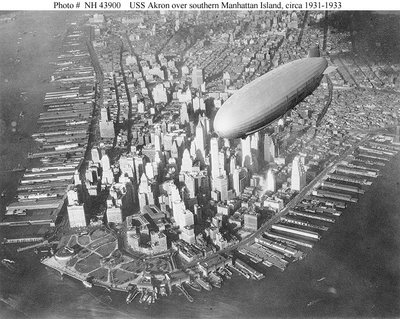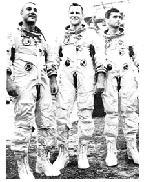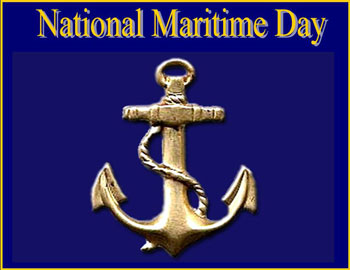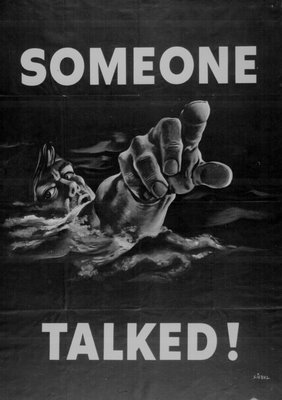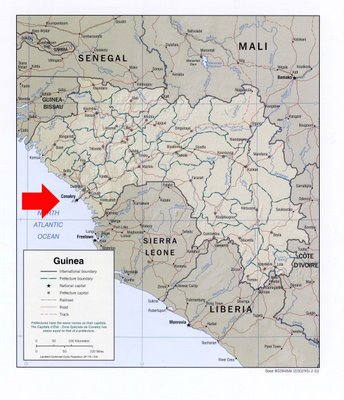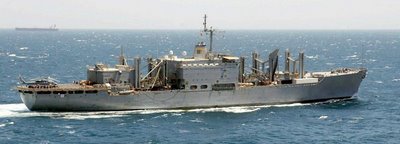
Reported
here:
No matter where a hurricane makes landfall, there are deepwater seaports close to the disaster area that can accept relief supplies and equipment delivered from the sea. A pre-loaded relief ship could reach a disaster area 12 to 36 hours after a storm compared to the three to five days it took for significant relief tonnage to reach New Orleans by land and air following Hurricane Katrina.
Seaports and other maritime assets should play an active, pre-planned role in hurricane recovery efforts, in addition to highway, rail or airlift, according to the report. "That would become extremely important should land or airlift access be cut off," said Whitehurst.
The model for Hurricane Relief from the Sea uses military concepts of a reserve force of ships -- some loaded with military equipment and supplies and based at various ports in the United States and overseas, some empty but maintained in quick break-out status.
The Ready Reserve Force maintained by the U.S. Maritime Administration is a fleet of relatively modern merchant-type ships that can be used in an emergency. When activated, these ships come under the operational control of U.S. Department of Defense's Military Sealift Command. Ready Reserve Force ships were activated in the Somalia peacekeeping operation (1992), in the Haiti Operation Democracy (1994), the Persian Gulf War (1990) and the Iraq War (2003). They have also been activated in support of non-military emergencies.
There are two classes of ships suitable as hurricane relief vessels. Neither one is dependent on on-shore power or dock equipment to load and unload cargo. One type - the roll-on, roll-off - can be quickly loaded and unloaded because it holds wheeled vehicles. A single roll-on, roll-off ship can carry 18-wheel tractor-trailer combinations loaded with food and other types of relief supplies, fire equipment, law enforcement vehicles, ambulances and power and communication repair vehicles. Many Ready Reserve Force ships have or can be fitted with a helicopter capability.
The second type is the break-bulk freighter. Cargo, including containers and wheeled vehicles are stored in the holds or on deck. Containers can be off-loaded onto a dock or directly onto flatbed trucks.
The ships can rely on their own power when power is not available on-shore. They can also be adapted to meet special requirements, such as serving as emergency medical or communications centers, feeding and housing hurricane victims and relief personnel, accommodating rescue helicopters and even supplying power to land-based units.
Report available
here.
In the aftermath of the "Boxing Day" tsunami, I started posting on the issues facing the aid effort and began suggesting that relief supplies should be brought in from the sea. See
here:
In today's Wall Street Journal: "In Sri Lanka, there are reports of food shortages among survivors due to the conditionsitons of the roads and a shortage of vehicles. 'We have tons of food. We are, In fact, innundated,' World Food Program spokeswoman Selvi Sachithanandam told the Associated Press. The problem, she said, was a 'lack of channels: to deliver relief to outlying areas.'"
Except for the ocean, that great highway of mankind.
Start sending relief supplies on the water to the beach front areas devastated by the tidal waves.
and began taking to task the UN's poor planning that does not include prepositioned ships with supplies for emergencies like typhoons, tsunamis, earthquakes and volcanic eruptions. See
here,
here,
here, and
here. One of the early lessons out of Hurricane Katrina was that much of the early relief flowed from Navy and Coast Guard ships that raced to the area.
If California or the other parts of the West Coast have a big earthquake, the sea is the logical area to stage relief efforts. One company in Mobile, Alabama, has undertaken actions to set up a former Navy ship, a Mars class AFS, as a
"Fast Attack Disaster Response Ship", with an Emergency Operations Center on board:
This EOC has been planned out to a satisfactory level at this point. The Unmanned Aerial Vehicle Operations Center (for hourly updated aerial mapping/mosaics of the disaster site), Communications Center (land, sea, and air), Water Purification Plant, Water Bottling Plant, Ice Plant, Tracking Supply Center- are also in good order. These will require a few modifications once the ship is reengineered, but for the most part the naval architects at JJMA will have everything they need to redesign the ship operations and spaces. This will be the most advanced ship afloat when it comes to coastal disaster response. Dell Computers will be handling all of the WiFi onboard, as well as...servers...radio tracking of cargo...fiber optics...advanced displays...etc...
I've been very pleased with the capabilities of Dell Computers and their incorporation of technologies in this project.
The ship will have an onboard, large capacity Press Corps Room for interviews and disaster response updates, a Media Center (for processing data information and getting it out to the local stations that are still on the air), Publishing Center (for printing information needed (in volume) by emergency response crews and communities that have been hit). All of which will better enable the dissemination of disaster information to the public when it is needed most.
A Mars Class US Navy Support Ship--similar to what we have designed for a disaster response platform. The "at sea" replenishment towers would be converted to hold 450' telescoping communication towers. This ship redesigned will be capable of supporting a 10,000 square mile disaster area virtually by itself.
Satellite uplinks and 8 deployable 450' communications towers will ensure communications on land, sea, and air remain operational. Special computer and data centers onboard will allow different communication conduits to interact, such as- cell phones and hand held radios - 800mhz and military channels - all able to communicate with each other when needed.
And, yes...the technology is proven, affordable, and it's FCC approved.
The ship will be capable of bringing more than 90% of all area radio EMS, Fire/Rescue, and Police radio communications back online within 1 hour of the ship's arrival on scene. Since we would be closely following the hurricane right up through landfall, this means the ship will be able to restore emergency response communications before most Police and Fire Departments even realize they were knocked out.
The emergency response center will have numerous wall screen display panels and assignment desks for over 75 Emergency Operations Center personnel (each with their own interconnected work station, communications, and computer). The Weather Center onboard the ship will also have the ability to transmit meteorological data to the National Hurricane Center in real time, as the ship follows the hurricane towards landfall.
Once donor funding is completed for the radar project, a Doppler Radar Station will be built onboard to supply FEMA and Meteorologists with the most accurate weather imaging possible for an inbound hurricane- imaging never before available- even before the storm reaches the range of land based Doppler stations. This will greatly increase the data files that are necessary for more accurate hurricane predictions...
This ship will also carry 75,000 gallons of gasoline for emergency response purposes such as generators and police cars. It will carry 100,000 gallons of JP fuel for US Coast Guard and other military helicopters that use the ship's aft flight deck. It will also carry 780,000 of diesel fuel for emergency response vehicles and boats (fire departments and Coast Guard).
All of this fuel can be transported and delivered by two 3,000 gallon tanker trucks carried onboard the ship to be used at the disaster scene. Each truck will have "run flat" tires and a "debris dozer blade" mounted on the front to help move trees and debris from the road as it moves from place to place. Four additional trucks, similarly outfitted will carry refer trailers (ice and perishables) and dry goods (food, clothing, shelters, equipment). A portable loading dock carried onboard the ship will allow up to 8 tractor trailers at once to be loaded with emergency cargo from the ship, such as bagged Ice and food--thus increasing the efficiency of the trucks available in the disaster area. Time spent traveling outside the disaster area to pick up supplies is time that could be spent loading locally and carrying more supplies...less fuel, less time in transport, means more emergency supplies to the victims and at less cost to the taxpayers. All trucks, fuels, and cargo will be in radio communication with the ship and will be monitored in the ship's Emergency Operations Center using GPS tracking.
And there's more but...
And it won't cost the taxpayers a dime to build it or maintain the ship...
And you'd think that Members of Congress would get excited about this.
And you'd be dead wrong.
We've heard very little out of DC about all of this Most staff members (who really run the Congressional offices) seem to care less about this bi-partisan effort. And to be completely fair, the Republicans have been little more responsive to what we are doing than the Democrats have been.
Go figure. Today it's more about Party control and capturing votes. Meanwhile emergency responders get the short end of this deal because we end up personally dealing with the mess politicians have created. They grandstand and we get the problems- at a "hands on" deeply personal level. Still not surprisingly, this project has met with little more than a "ho-hum" attitude from the staffers in Congress. There are a few notable exceptions to this: Congressman Bonner (R-AL), Congresswoman Brown (D-FL), Senator Allen (R-VA) and Congresswoman Kaptur (D-OH). At least these politicians and their staffs have been supportive and tried to work with us on the project...
And people wonder why the number of emergency responders have been dropping in recent years…
Anyway, the US Coast Guard Auxiliary, Dell Computers, and a host of others we've been working with have been excited about this project and want to participate.
Ah, the old "not invented here" problem.
Confederate Yankee has been on Operation Enduring Service for some time, see
here and offered up this quote from OES 's weblog:
We are preparing to receive at least two ships (if everything goes as planned) to begin the conversion to Fast Attack Emergency Cargo Ships to respond to disaster incidences in Coastal States (East Coast, Gulf Coast, and in some instances West Coast). It is estimated that we can removed about 27% of the federal burden for Ice, Water, and food within the first 10 hours following a CAT-4 landfall. There is also the ability of providing climate controlled medical and staging facilities for up to 40 percent of the same disaster area.
So, you want to see what these old girls will be able to do? Here's a list of only a few things we can provide during a Coastal State disaster (such as flooding or a hurricane)
----Service a disaster area of up to 10,000 square miles (up to 100 miles inland) with minimal (if any) outside support
----Provide complete berthing facilities for up to 400 emergency responders "on scene" at a disaster site
----Fully integrated communications system serving all local, state, and federal agencies, as well as cell phone coverage and military band frequencies--allowing for seamless communications between all disaster scene personnel, no matter what radio frequency or cell phone is being used.
----Daily provide 110 tons of bagged and palletized ice to the disaster region
----Daily generate, bottle, and palletize up to 50,000 gallons of fresh water
----Provide refueling station and loading platform for helicopters operating in the disaster area
----Carry over 7,000 tons of food and supplies for a disaster area
----Store (and provide delivery of) 700,000 gallons of diesel, gasoline, and aviation fuel for use in the disaster area on emergency vehicles and critical needs generators (hospitals, emergency operation centers, etc)
.......and that's just one ship.
It's time to realize that the government can't do it all during a disaster--we've got to roll up our sleeves and get to work to make sure the needs get met--one way or another.
Best part? The first two ships can be ready before next hurricane season--if things go as planned and all of you help us as we've asked.
OES does seem to have just a wee bit of trouble with MARAD, which as you may have noted, is a prime mover in the concept of "relief from the sea" as presented in the first link. It appears that MARAD is having an open ship event in June in Wilmington, NC. I may have to wander down for that...
You might want to see
this for an estimate of activating MARAD Ready Reserve ships to undertake "relief from the sea."
I guess the good news in all this is that it appears that people are thinking the right thoughts, even if the process is one of those sausage making things...
Now, how do we get the UN to actually plan ahead?








